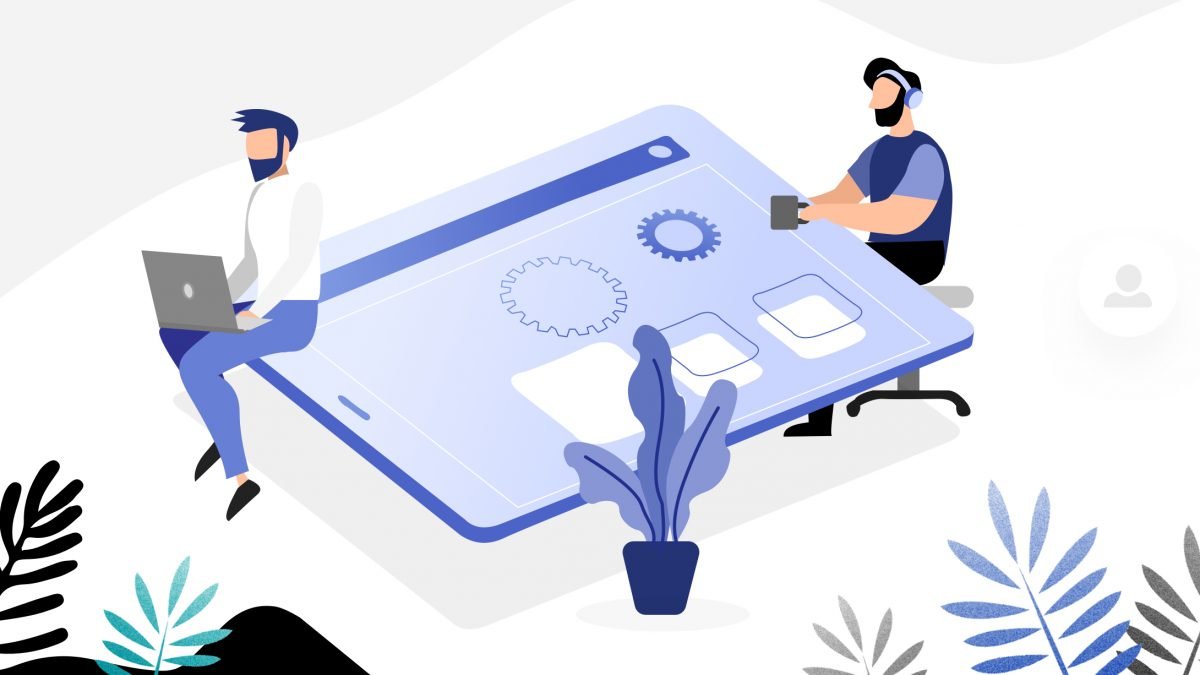When it comes to mobile app development, there’s several routes you can take. Some businesses decide to build native apps while others go with cross-platform development. Building cross-platform has several great benefits. It can save a lot of time and money, depending on the app you’re developing. So, without further ado, let’s jump into the top cross-platform development technologies:
React Native
React Native is a framework supported and developed by Facebook. It is open source though, so there’s no need for licencing and worrying about copyright issues. Let’s take a look at its most important features:
- Premiere: 2015
- Programming Language: JavaScript
- Supported Platforms: iOS, Android
- Development Time: Moderate
- Development Cost: Moderate
- Popular Apps: Facebook, Instagram, Skype
React Native has been around for quite some time. Since it first launched in 2015, the fanbase has been growing, as has the framework itself. The maturity of React Native is one of its biggest advantages along with its programming language being JavaScript. This makes React very easy to learn and use. The resources created over the years are a great help to teams working with React. However, building an app in React Native does require some native code. Certain features need to be adapted to a specific platform using the platform-native programming language (so Swift, Objective C or Java). This means that the cost of developing React Native apps might not be as low as with some other frameworks, because there’s some native expertise needed.
Flutter
Just like React Native, Flutter has the support of a tech giant – Google. It’s been officially released in 2018, so not long ago. However, it’s already gained substantial popularity and is now considered a valuable alternative to other cross-platform development frameworks. Here are its features:
- Premiere: 2018
- Programming Language: Dart
- Supported Platforms: Android, iOS, Windows, Mac, Linux, Google Fuchsia, Web
- Development Time: Quick
- Development Cost: Low
- Popular Apps: Reflectly, Google Ads, Xianyu by Alibaba
What makes Flutter great is how versatile it is. This particular SDK allows the development team to very easily create even the most complex interfaces and user flows. Another great thing about it is that, in the contrary to React Native, it doesn’t use a bridge to communicate with the native components of the platform. This makes for Flutter apps’ very quick reaction and excellent performance even with complicated UIs. Besides that, many developers find working with Flutter simply fun and easy. There’s multiple junior developers on our team who haven’t worked with Flutter before joining us but found it easy to learn and more enjoyable than native development. Apps built with Flutter have also one additional huge advantage – the interface will look the same on all the versions of a certain operating system. This means that even if the user hasn’t updated their device, they will still get the same experience as someone who is up-to-date with their OS.
Subscribe for exclusive access
Ionic
Ionic is one of the oldest cross-platform software development kits as it came out in 2013. It was originally based on Angular, however now, developers have more freedom to choose which technology they will use with Ionic.
- Premiere: 2013
- Programming Language: Angular, Vue.js, React, JavaScript
- Supported Platforms: Android, iOS, Windows, Blackberry, Web
- Development Time: Quick
- Development Cost: Low
- Popular Apps: MarketWatch, Pacifica, Sworkit
Ionic advertises with a tagline “One codebase. Any Platform.”. Since it was first introduced the framework started to offer more and more development possibilities. Teams can either use their favourite framework with Ionic or simply use JavaScript. It offers ready-to-use UI components for each platform to make the development fun and easy. It also has a huge native components library so that your app can access the most important native features of a device. On top of that, there’s tons of available integrations for Ionic apps like Stripe, PayPal, Touch ID, Google Maps and more.
Xamarin
Just like React Native and Flutter, Xamarin has the support from Microsoft (the tech giant bought the company in 2016). Xamarin is also one of the original cross-platform frameworks and has been around since 2011.
- Premiere: 2011
- Programming Language: .NET, C#
- Supported Platforms: Android, iOS, tvOS, watchOS, macOS, and Windows
- Development Time: Moderate
- Development Cost: Moderate
- Popular Apps: Olo, Storyo, Insightly
Xamarin promises excellent-performance apps while still enabling developers to reuse around 75% of their code for multiple platforms. What makes Xamarin nice is a complete Apple operating system support (with the exception of iPadOS). Additionally, the support from Microsoft ensures there’s a large community and a lot of resources gathered around the framework, so it’s easy to learn and work with. Besides that, you can also easily integrate the Azure Cloud into your business model (it’s even recommended on the Xamarin website).
If you’re looking for a team that can handle either of the above technologies and build your product – contact us and let’s get your project started!
